Sulfur-Producing Ijen Crater: Inside The World's Largest Source Of Sulfur
The Beginning
Ijen Crater has its own history. In the past, this volcano was very large, but it was torn apart by three violent eruptions. These eruptions started around 3,500 years ago. The eruptions made a huge hole that was 19 x 21 km2 at the bottom and 22 x 25 km2 at the top. This crater is called the Ijen Caldera.
READ ALSO: Ijen Volcano Tour from Banyuwangi or Ketapang Harbor
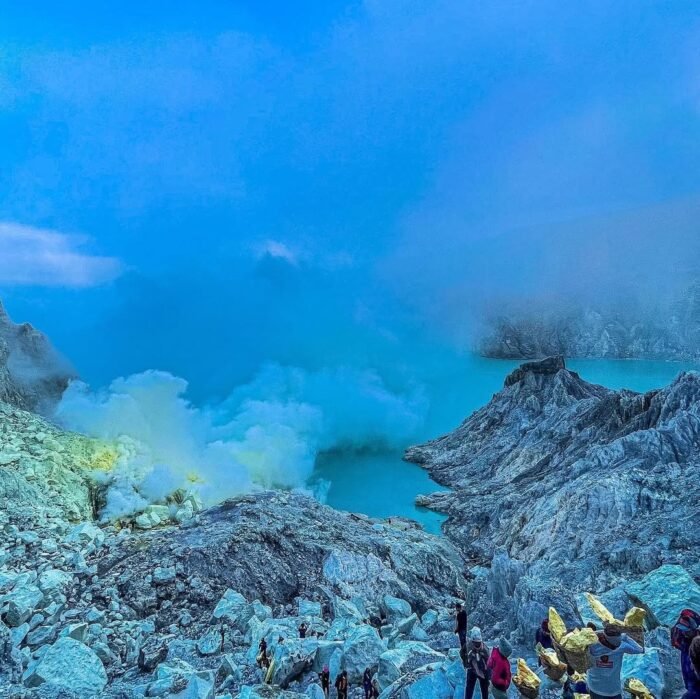
Instagram.com @she_shoujo
In the middle of the caldera, a crater lake was formed, and it is still the center of Mount Ijen’s volcanic activity today. The crater lake is 160 x 1160 m2 at the top (crater rim) and 960 x 600 m2 at the bottom (lake). The lake water is thought to be one of the most acidic in the world because its pH (acidity) ranges from zero (unmeasured) to 0.8. The value changes depending on the conditions during the rainy or dry season.
The volcano that marks the eastern edge of Java Island is called Kawah Ijen. The Ijen Crater is located at 8° 03.5′ South latitude and 114° 14.5′ East longitude in the Banyuwangi Regency and Bondowoso Regency of East Java Province.
Problems and Benefits Related to Ijen Crater
Some Problems
The Ijen Crater in East Java is beautiful, but it is also causing significant environmental and health problems. The lake water is highly acidic, with a pH level often below 0.5. Furthermore, such water contains a lot of different elements, like sulfuric acid, hydrogen chloride, aluminum sulfate, and iron sulfate.
This “abnormal” water quietly seeps through the volcanic rock, then flows downstream to the river. It goes through neighborhoods, rice fields, plantations, and even factories before reaching the sea.
This has led to widespread environmental pollution. Acidic water can damage factory components, cause skin irritation and tooth decay in residents, and stunt the growth of plants and other vegetation along its path.
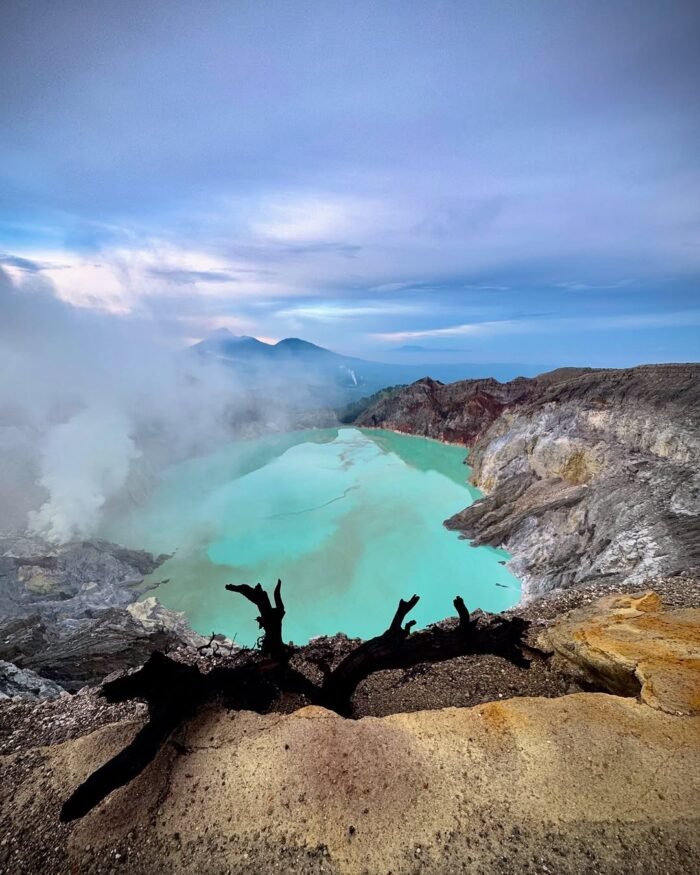
Instagram.com @bromopointindonesia
Also, pollution is not just in the water. Volcanoes constantly release sulfur dioxide (SO₂) and other harmful gases. This makes the air around the crater dangerous.
These emissions can reach levels as high as 16.98 milligrams per cubic meter (mg/m³) near sulfur sources. This can cause serious problems for miners and visitors, like breathing problems, eye damage, and skin problems.
The problem is made worse by the traditional sulfur mining operations in Ijen Crater. The miners extract about 14 tons of sulfur per day. But they work in very dangerous conditions without the right protective equipment. Long-term exposure to SO₂ and acid fumes can cause serious health problems, including chronic respiratory diseases, skin disorders, and other health issues for workers.
Mining causes problems like erosion and ecological imbalance. The acidic water of Ijen Crater helps remove heavy metals from volcanic rocks. This causes the levels of heavy metals like aluminum, sodium, and iron to go up and down, and sometimes they reach very high levels in the lake and downstream waters. These heavy metals are especially dangerous to human health and agricultural productivity.
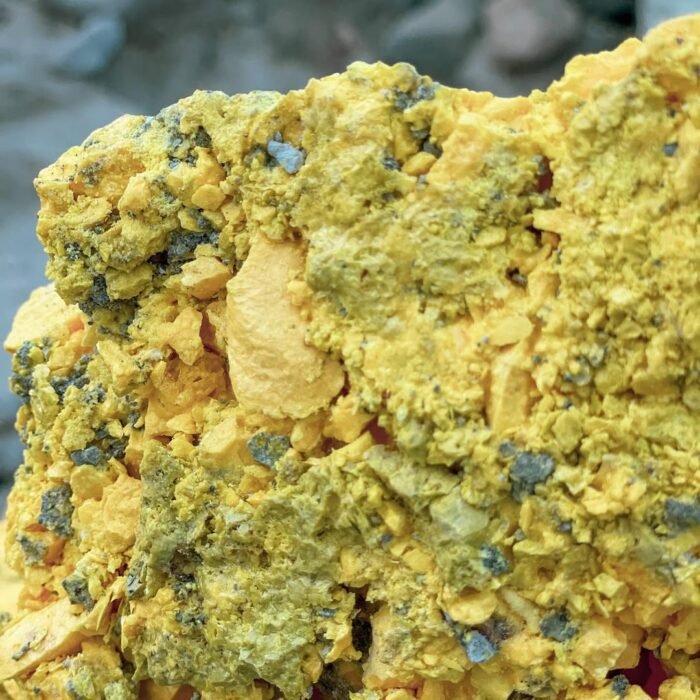
Instagram.com @she_shoujo
Some Benefits
Even though there are challenges, the sulfur-producing Ijen Crater also has benefits. Extracting sulfur helps local people make money. The area’s unique geological features, like its mountains and rivers, attract tourists and researchers from around the world. The crater’s rock is made of volcanic and limestone deposits. These deposits form natural gypsum through chemical reactions with sulfur-rich water.
However, there is still a delicate balance between economic benefits and environmental and health risks. The Indonesian government has encouraged people to stop using illegal mines and find other ways to make money. However, problems of pollution, dangerous working conditions, and ecological degradation persist. In short, the sulfur-producing Ijen Crater presents a complex interplay between natural wonders, economic needs, and serious environmental and public health concerns.
Sulfur Mud in the Sulfur-producing Ijen Crater
One volcanic product that can be used is sulfur. This excavated material is useful in cosmetics, medicine, bleach, and more. Ijen Crater, located in Indonesia, is a volcano that produces large amounts of sulfur.
According to the manager of Alas Purwo National Park, at least 14 tons of sulfur are mined daily. However, an analysis by BPPTK (the Center for Volcanology and Geological Hazard Mitigation) states that this value is only about 20% of the volcano’s actual potential.
The main obstacles to achieving better results are the difficult terrain and inadequate technology. Miners use very simple methods to “catch” sulfur. They install iron pipes (pawon) with a diameter of 16–20 cm. Each pipe is one meter long, allowing miners to easily install and replace them if damaged.The pipes are then connected from the top of the cliff, where the solfatara point reaches temperatures of 200°C and is a source of sulfur, to the bottom of the cliff, which is 50-150 meters away. Sulfur gas flows through the pipe and sublimates at the end of the lower pipe, ready to be mined.
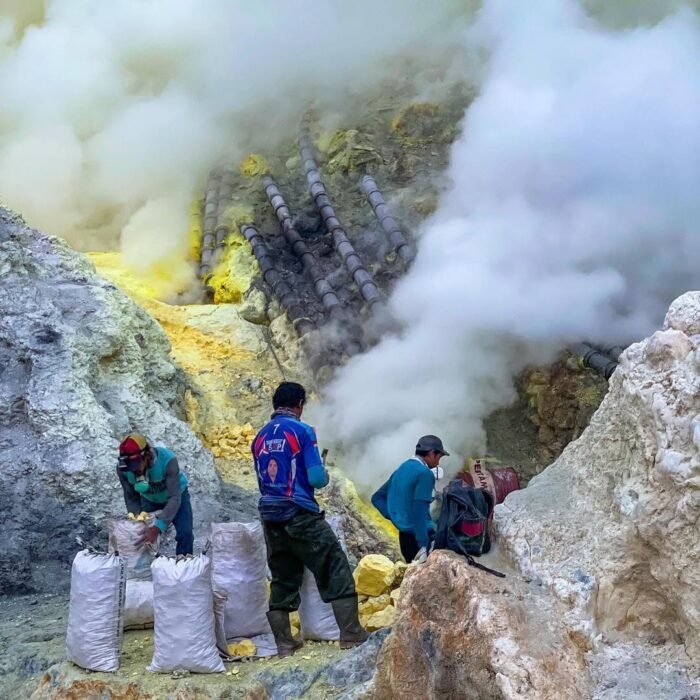
Instagram.com @she_shoujo
However, if one of the pipes is damaged due to corrosion, the sulfur vapor does not flow completely and is released into the air without sublimating. Another issue is that when the solfatara temperature exceeds 200°C, the sulfur vapor burns before it can sublimate.
The Difficult Life of the Ijen Crater Sulfur Miners
Mining sulfur is not an easy job. The miners are working in difficult conditions. Also, there’s no guarantee they’re safe.
When regular people stand at the sulfur sublimation site for a few minutes, they will feel dizzy and sick to their stomach. However, the miners have to work for several hours every day without protective masks or anything like that. It’s a tough choice.
All miners try to sell their ore for as much as they can, but sometimes they have to sell for very little money. After struggling to breathe in the thick, smelly mud, they have to carry the chunks of sulfur to the top of the crater. The distance from the bottom to the top of the crater is 300 meters, and the slope is between 450 and 600. Then, the miners continue to the shelter in Paltuding Valley, which is 3 kilometers away.
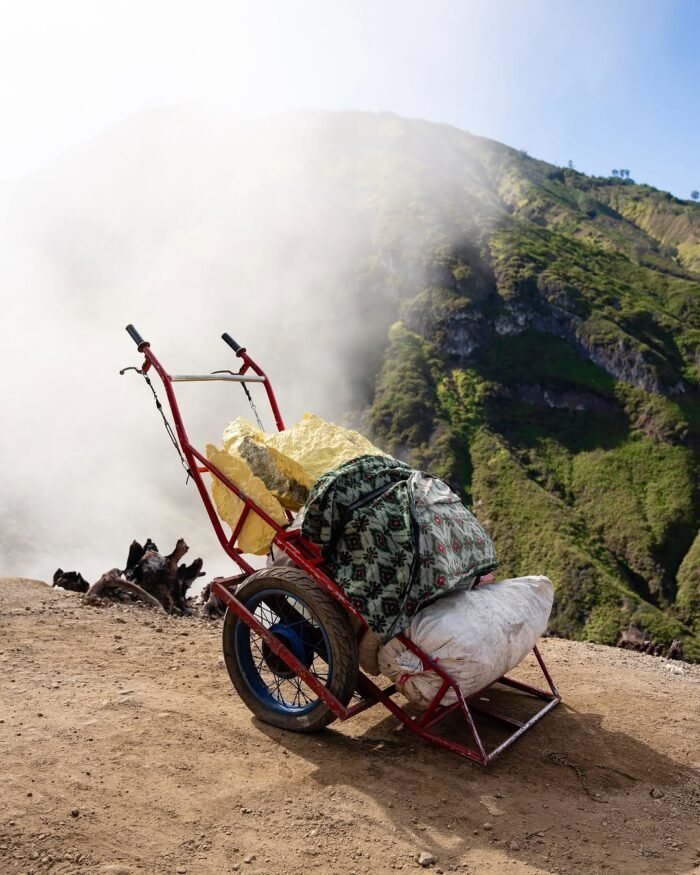
Instagram.com @marieisaway
Each miner (shoulder) can carry 75-90 kg of sulfur. They earn a few hundred rupiahs per kilogram of sulfur. Each miner earns between IDR 50,000 and IDR 75,000 every day by breathing in the poisonous mud without wearing safety equipment.
When the rice is ready to be harvested, the miners go to the rice fields or gardens. The crop is smaller, but they can breathe clean air.
Ijen Crater’s Blessing in Disguise
Ijen Crater is dangerous. The area around the crater is pretty dangerous. The lake water is high in acidity, and the air is highly toxic.
However, the dangerous sulfur also brings fortune to the people around Ijen. It’s dangerous but it’s also beneficial. So, we’ve got to be able to take the right steps to get the benefits.